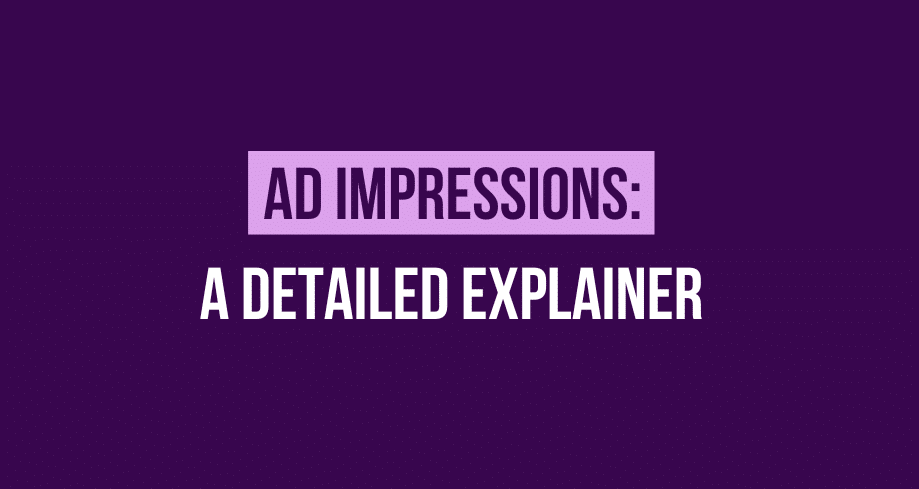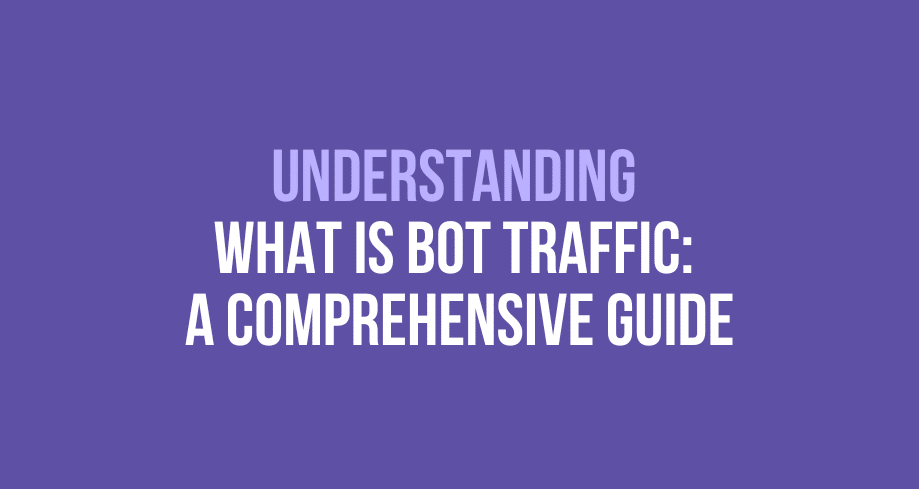Ad impressions measure the impact of an ad by denoting how many times it has been viewed on a given network or publisher’s app. Advertisers can differentiate between unique and nonunique impressions to assess if particular individuals saw their ads, as well as understand how frequently they were shown.
All digital marketers know this. But there are some important things to keep in mind regarding ad impressions:
- Impressions can only show how often an advertisement is seen by a user, not the degree to which they connect with it.
- Impressions can either be distinct or duplicate.
- With eCPM, it’s easy to see just how much revenue an ad impression can generate.
Let us dig in and understand how ad impressions work.
Types of Ad Impressions
Ad Impressions are typically categorized into two distinct categories: served impressions, and viewable impressions.
Served Impressions
Measuring the success of an advertising campaign is now facilitated by tracking served impressions. This metric counts any time an ad is displayed from a server, even if it’s not spotted by viewers. Served impressions have become the go-to assessment for gauging success in marketing endeavors.
Viewable Impressions
Viewable impressions are counted when a viewer is exposed to at least 50% of an ad for no less than one second. Marketers find this metric particularly useful as it helps them understand how many times their ads were viewed by actual people.
Why Are Ad Impressions Important?
After learning about the two types of ad impressions, marketers have one question on their minds.
They know that there isn’t an ideal metric when it comes to these ads.
Impressions will give you a clue of how often your ad appears online, but it won’t provide any insight into the number of individuals who have interacted with it.
But even after knowing this, there is no question that ad impressions are an essential metric in mobile marketing, forming the basis for many other key metrics.
Here’s why that is:
- Impressions provide us with invaluable insights into our ad performance in any given channel. By observing this metric, we can easily ascertain the reach of an advertising channel.
- For advertisers to correctly assess the cost of a CPM campaign, it is paramount that they acquire an accurate evaluation of the impressions their ad generates.
- Impressions are the quintessential measure when establishing effective cost per mille (eCPM), which is a monetizing model for publishers. Knowing your eCPM indicates how efficiently you’re generating revenue from website traffic.
Calculating metrics such as click-through rate (CTR) accurately requires you to be aware of the number of impressions.
Difference Between Ad Reach and Ad Impressions
Advertising campaigns are often quantified by Reach and Impression metrics. Reach measures the number of unique individuals that encounter a campaign, while impressions count how many times an ad is presented to its viewers.
To illustrate, when your advertisement is revealed to 100 individuals 5 times each, the reach would be 100 while impressions are 500.
How does the difference Between Reach and Impressions affect campaigns?
Marketers need to keep these things in mind as they run campaigns. The difference between knowing how reach and impressions has a direct bearing on their digital marketing efforts.
Here are some examples:
- Brand Awareness
Growing your reach is a surefire way to boost awareness for your brand.
Posts that reach more users are essential, yet it won’t mean much unless those 5,000 individuals actually engage with what you’re offering.
To ensure that people stay interested in the content, you must provide something that captures their attention and resonates with them. That’s where quality comes into play – without it, even the most extensive post will flop!
Leverage the power of leading social media channels like Facebook and Twitter to expand your brand awareness.
To maximize your digital marketing strategy, it is critical to understand the distinctions between Reach and Impressions. Without comprehending these differences, you could inadvertently invest in strategies that harm rather than enhance your brand image among potential customers. Don’t let this be you — learn how Reach and Impressions differ today.
- Audience Growth
Expanding your social media following provides you with a great opportunity to reach out to new prospects and introduce them to the amazingness of your brand and services.
Grasping the core dissimilarity between Reach vs Impressions is essential to creating great content that will reach your desired audience. Understanding these metrics can be a real game-changer in how you craft and distribute your work.
Gaining more fans and followers through captivating content that motivates them to share your messages is key for exponential growth.
- Audience Influence
Why bother constructing a devoted following if you can’t routinely and effectively shape their decision-making and expand your influence?
By understanding both your Reach and Impressions, you can establish a strong connection with those who already engage with your content. This empowers you to foster meaningful relationships that will last over time.
That is why, before you begin analyzing Reach versus Impressions, you must first attain a better understanding of these two metrics and how they operate.
Ad Clicks vs Impressions: Which Is More Important?
Comprehending the contrast between ad impressions and ad clicks is straightforward. Impressions reveal how many times your advertisement was showcased to audiences without any type of engagement from them, whereas clicks indicate just how often people clicked on your promotion in order to explore what you have to offer.
We can’t depend on impressions alone to assess the performance of our app. Engagement is always the most important goal when it comes to advertising, so clicks are a far better gauge than simple impressions for tracking this metric. A single click implies that your advertisement was eye-catching enough for someone to take action – like downloading an application or game, for example. If you wish to measure and track your conversions and website traffic more accurately, focus on CTR (click through rate) as a primary metric -this will give you insight into how effective your adverts were in achieving desired results.
How Do You Improve Ad Impressions?
Are your ads not producing the desired results? Are you finding it difficult to meet your KPIs? There might be numerous causes as to why users are not responding favorably to your ad campaigns. Here is a quick step guide that will help you optimize how they perform:
- Enhance and amplify your bids to the users and ad formats that yield the highest returns.
- Experiment with various ad sizes, formats, and placements to identify the most effective ones – you’ll get a better understanding of what works best through A/B testing.
Conclusion
It may appear complex to distinguish between reach and impressions at first, but the difference between the two is not impossible to comprehend. Once you comprehend the distinction between each metric, you are on your way towards achieving the most vital one of all: social media engagement.
Every social media campaign should be fueled by increased engagement as its highest priority. If your content isn’t garnering likes, replies, or shares, then something is off—whether it’s the actual material itself or who you’re targeting with it. The first step in cultivating engagement is creating awareness; reach and impressions are essential for driving people to take action towards engaging with your brand! It’s impossible to enhance engagement without taking the other two elements, reach and impressions, into account. Therefore if you’re looking for ways to increase your engagement rate, make sure to contemplate how reach and impressions influence it as well.
In short, ad impressions are a key factor to keep track of when evaluating the success of your campaign. With them you’ll be able to gauge how many users view your ads and what is their frequency. Moreover, they signify the actual value of your traffic.
Frequently Asked Questions
What is the difference between ad impression and ad reach?
An ad impression is the number of times an ad is displayed, while ad reach is the number of unique individuals who have seen the ad.
How is ad impression measured?
Ad impression is typically measured using cookies or web beacons, which track the number of times an ad is loaded and displayed on a website or mobile app.
How is ad reach measured?
Ad reach is typically measured by tracking unique users who have viewed the ad. This is typically done by using cookies or device IDs to track individual users across multiple platforms.
Can ad impressions and ad reach be the same?
No, ad impressions and ad reach are not the same. Ad impressions refer to the number of times an ad is displayed, while ad reach refers to the number of unique individuals who have seen the ad. It’s possible to have a high number of ad impressions but a low ad reach if the same users are seeing the ad multiple times.
Can a campaign have a high ad reach but low ad impressions?
Yes, a campaign can have a high ad reach but low ad impressions. This could happen if the campaign is targeted at a smaller, specific audience but the ads were seen multiple times by each person in that audience.
Why is it important to measure both ad impression and ad reach?
It’s important to measure both ad impression and ad reach to get a complete picture of the performance of an ad campaign. Ad impressions give an idea of the frequency of the ad is seen while ad reach gives an idea of the total audience reached by the ad campaign. Together, these metrics can provide valuable insights into the performance of an ad campaign, such as the effectiveness of targeting, message, and overall reach.




